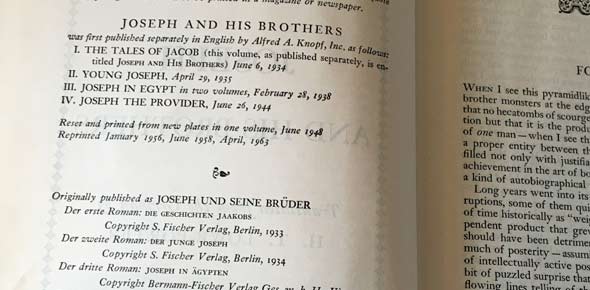Joseph Lister And Antiseptics

This quiz is about joseph lister and his work.
Questions and Answers
- 1.
In what year did Joseph Lister move to London to work with young surgeons?
- A.
1875
- B.
1877
- C.
1879
Correct Answer
B. 1877Explanation
Joseph Lister moved to London in 1877 to work with young surgeons.Rate this question:
-
- 2.
What chemical did Lister use to stop infections?
- A.
Carbolic Acid
- B.
Nitrus Oxide
- C.
Ether
Correct Answer
A. Carbolic AcidExplanation
Lister used carbolic acid to stop infections. Carbolic acid, also known as phenol, is a disinfectant that kills bacteria and prevents their growth. Lister pioneered the use of carbolic acid as an antiseptic during surgical procedures, significantly reducing the risk of infections. This breakthrough in medical practice revolutionized surgery and greatly improved patient outcomes. Nitrous oxide and ether, on the other hand, are anesthetic gases used to induce anesthesia, but they do not have the same antibacterial properties as carbolic acid.Rate this question:
-
- 3.
Where did the idea of using carbolic come from?
- A.
Sewage
- B.
Antiseptic
- C.
Infections
Correct Answer
A. SewageExplanation
The idea of using carbolic came from sewage. This suggests that carbolic was initially used as a means to combat the issues and diseases associated with sewage. Carbolic likely proved effective in disinfecting and eliminating bacteria and germs present in sewage, making it a valuable tool in promoting cleanliness and hygiene in areas with sewage problems.Rate this question:
-
- 4.
Did patients survive the operation?
- A.
Some did
- B.
All
- C.
None of them
Correct Answer
A. Some didExplanation
The answer "some did" suggests that not all patients survived the operation. It implies that there were patients who survived the operation, but there were also patients who did not survive. The answer indicates that there was a mix of outcomes, with some patients experiencing a positive outcome and others not.Rate this question:
-
- 5.
What did doctors do to keep the patients wounds clean?
- A.
Antisetpic
- B.
Vinger and wine
- C.
Water
Correct Answer
B. Vinger and wineExplanation
Doctors used vinegar and wine to keep the patients' wounds clean. Vinegar and wine have been used for centuries as antiseptics due to their acidic properties. The acetic acid in vinegar and the alcohol in wine can help kill bacteria and prevent infection in wounds. These substances also have a drying effect, which can aid in the healing process. Therefore, doctors would apply vinegar and wine to clean the patients' wounds and promote proper healing.Rate this question:
-
Quiz Review Timeline +
Our quizzes are rigorously reviewed, monitored and continuously updated by our expert board to maintain accuracy, relevance, and timeliness.
-
Current Version
-
Mar 20, 2023Quiz Edited by
ProProfs Editorial Team -
Jun 24, 2010Quiz Created by
MissGridley
- A Lesson Before Dying Quizzes
- A Separate Peace Quizzes
- A Song Of Ice And Fire Quizzes
- A Tale Of Two Cities Quizzes
- Airman Quizzes
- Al Capone Does My Shirts Quizzes
- Alex Rider Quizzes
- Alices Adventures In Wonderland Quizzes
- All Quiet On The Western Front Quizzes
- An Acquaintance With Darkness Quizzes
- As I Lay Dying Quizzes
- Because Of Winn Dixie Quizzes
- Brave New World Quizzes
- Breaking Dawn Quizzes
- Bud Not Buddy Quizzes
- CHERUB Quizzes
- Cold Mountain Quizzes
- Crime And Punishment Quizzes
- Dracula Quizzes
- Emma Quizzes
- Fahrenheit 451 Quizzes
- Fate Zero Quizzes
- Frankenstein Quizzes
- Frankenstein Novel Quizzes
- Freak The Mighty Quizzes
- Frindle Quizzes
- From The Mixed Up Files Of Mrs Basil E Frankweiler Quizzes
- Great Expectations Quizzes
- Holes Quizzes
- House Of Night Quizzes
- Island Of The Blue Dolphins Quizzes
- James And The Giant Peach Quizzes
- Killing Mr Griffin Quizzes
- Love Story Quizzes
- Maximum Ride Quizzes
- Out Of The Dust Quizzes
- Redwall Quizzes
- Roll Of Thunder Hear My Cry Quizzes
- Skeleton Creek Quizzes
- Spirit Animal Quizzes
- Swindle Quizzes
- Sword Art Online Quizzes
- Tess Of The Durbervilles A Pure Woman Faithfully Presented Quizzes
- The 39 Clues Quizzes
- The Book Thief Quizzes
- The Breadwinner Quizzes
- The Catcher In The Rye Quizzes
- The Count Of Monte Cristo Quizzes
- The Face On The Milk Carton Quizzes
- The Five People You Meet In Heaven Quizzes
- The Giver Quizzes
- The Great Gatsby Quizzes
- The Heroes Of Olympus Quizzes
- The Hobbit Quizzes
- The Kingdom Keepers Quizzes
- The Kite Runner Quizzes
- The Lightning Thief Quizzes
- The Lunar Chronicles Quizzes
- The Merchant Of Venice Quizzes
- The Metamorphosis Quizzes
- The Old Man And The Sea Quizzes
- The Outsiders Quizzes
- The Picture Of Dorian Gray Quizzes
- The Secret Garden Quizzes
- The Sign Of The Beaver Quizzes
- The Stranger Quizzes
- The Things They Carried Quizzes
- The Time Machine Quizzes
- The True Confessions Of Charlotte Doyle Quizzes
- The Westing Game Quizzes
- The Wheel Of Time Quizzes
- Their Eyes Were Watching God Quizzes
- Things Fall Apart Quizzes
- Thirteen Reasons Why Quizzes
- To Kill A Mockingbird Quizzes
- Treasure Island Quizzes
- Unwind Quizzes
- Walk Two Moons Quizzes
- Warriors Quizzes
 Back to top
Back to top


